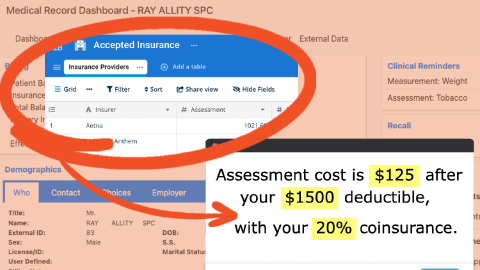Interview Questions - Tables and Snippets Bundle
Maintain a list of your best interview questions by role and use them in any app
Giving candidates a great interview experience is key to finding good talent. It’s important that you ask all candidates the same questions for consistency.
Additionally, when you’re doing a lot of hiring for the same positions you’ll want to save your best questions to reuse instead of having to write new interview questions each time.
This space makes it easy to pull up your best interview questions for any role, put together a hiring panel of your current employees, and see the distribution of your employees by department.
With the Interview Questions space, you can manage your headcount and interviewing process from one place, and use that information anywhere.
How to use the Interview Questions space and snippets
- Scroll up to the Data Blaze space and snippets bundle just above this section.
- Click the "Copy to Text Blaze" button in the top-right corner of the bundle.
- Click the "Save" button in the top-right corner of the draft page that loads.
To use any of the snippets, type the keyboard shortcut in any text box on the web.
To add your own information to the Data Blaze space, go to the Data Blaze homepage and click into the newly-created space.
Interacting with the Interview Questions space from Anywhere
With Text Blaze snippets, accessing interview questions or creating a hiring panel for a new job listing is easier than ever. To get you started, we’ve created three snippets that interact with the space, enabling you to use its information from anywhere on the web:
Retrieve interview questions: simply select the title of the role for which you’re holding interviews, and receive a list of all of the stored interview questions for that role. This is especially useful if you’re sharing the questions with the people on your interview panel.
Add new Job Title to table: easily create a new entry in the Titles table if one didn’t exist already. If you’re hiring for a new position for which you’ve never hired before, this will let you create a new entry in the table so you can start saving your favorite interview questions.
Create list of interviewers: access your list of employees to create an interview panel for your interviews. This is especially useful when providing your candidates with a list of the people that they’ll be meeting during their interview process.
These are only a few of the things that you can accomplish with the Interview Questions template and Text Blaze snippets. Any information in the template can be accessed through your snippets.
Retrieve interview questions for a role
Select the role you’ll be holding interviews for, and get all your saved questions returned to you.

Add new Job Title to table
Create a new job in the TItles table. Useful for when you’re hiring for a new position not yet listed.

Create list of interviewers
Generate your interview panel from a list of your employees, including their titles and other details about the interviewers.

Space Overview
The Interview Questions space contains six tables which allows you to keep a list of your best interview questions, all of your employees, and all of your office locations. These six tables are:
Questions has each of your favorite interview questions, organized by which role they’re used for. There’s additional data for categorization, such as the type of question, notes about the question, and who the original author of the question was.
Sample answers helps the interviewers that are asking these questions understand what potential answers may be. You can keep track of your ideal answers in this tab, and evaluate the responses of interviewees against entries here.
Employees can be used to list all of your employees, or those that may be involved in the interview process. You can store any information about your employees here that you’d like, such as start date, title, and employment status.
Titles lists the various job titles that you have in your organization, whether it’s a title someone currently holds or a title that you’re interviewing for for the first time.
Departments are associated with employees and titles, and lets you see how many employees you have in each department.
Office locations lists each office you have for your company. This information can be as specific or general as you’d like to fit your needs.










